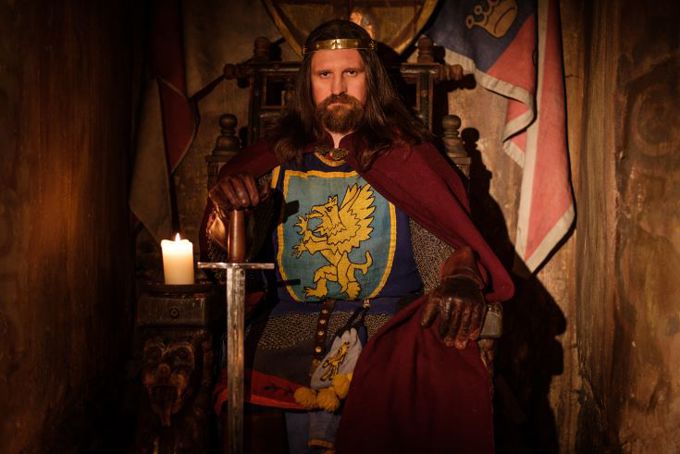
Grant from 1726 Proves Stream Ownership
Lawsuit to Prove Stream Bed Ownership Based on a King’s Grant from 1726
We recently went to court where we used the Virginia law of King’s Grants to help a waterfront property owner establish ownership rights to a stream running through his property, as against a person who insisted on fishing there, repeatedly, and refusing to leave, sometimes belligerently, claiming that the stream bed was public property.
The client tried to solve this problem on his own. Before coming to us, he hired a local attorney specializing in cases unrelated to waterfront property law. The client, together with the local attorney, met with the local Sheriff, and the County Attorney, but both of these officials declined to recognize our client’s ownership rights.
For this reason, it was important that we establish our client’s ownership of the stream bed as against the offending fisherman and, by extension, all other persons who on future dates might seek to access our client’s streambed without permission. Delivering this result required us to file a lawsuit on our client’s behalf the in the local Circuit Court.
The Legal Framework: Chain of Title
We used the chain of title to prove to the Circuit Court that our client owned the stream bed. One difficulty was overcoming the rule, based on Virginia Code §28.2-1200, that the stream bed was “the property of the
Commonwealth [to] be used as a common by all the people of the Commonwealth for the purpose of fishing, fowling, hunting, and taking and catching oysters and other shellfish.” This rule, by terms of the statute, applied only to the “ungranted” beds of waterbodies. Our task, then, was to prove that the stream bed was granted to our client.
The King of England’s Claim to Ownership
If we disregard the rights of Native Americans who inhabited Virginia from time immemorial, then the King of England was the first owner of our client’s property, along with all other property in modern day Virginia. The King’s ownership was based on the international law of discovery.
The Virginia Company of London made the first English exploration, based on a charter issued in 1606 by King James I. The Virginia Company sent three ships. They landed in in 1607 in what is now Jamestown, Virginia. Under the leadership of Captain John Smith, this group established the first permanent English colony at Jamestown, and explored (and mapped) the Chesapeake Bay, the Potomac and Rappahannock Rivers, and the shores
of northern Virginia, claiming all of these lands and waters for the English King. Other English explorers later mapped the remaining parts of Virginia.
Land Grants from King of England
The King’s Grant is the conveyance that shifts ownership from the King to another person or entity. On May 11, 1726, Hugh Drysdale, The Secretary of the Colony of Virginia, acting as the agent of King George I, granted 387 acres to Benjamin Rush. The second conveyance was issued on September 28, 1728 by William Gooch, Lieutenant Governor of the Colony of Virginia, acting as the agent of King George II. It granted 813 acres to Richard Malden. The 1726 and the 1728 conveyances were both called a “patent”, as opposed to being called a “deed” or a “grant”. A “patent” is a first-title deed regarding land originally owned by the King. Each patent conveyed ownership of the “rivers, waters, water courses, together with the exclusive privilege of hunting, hawking, fishing and fowling”. It turns out that our client’s streambed meandered through both of these very large parcels that the King granted to Messrs. Rush and Malden through the patents issued in 1726 and 1728.
Both patents were written in “Old English”, which is the earliest recorded form of the English language, and required translation for use in court. Expert witnesses with special skills were needed also to establishing the boundaries of the lands conveyed in the patents.
Bringing the Chain of Title Forward to the Present Day
Tracing the chain of title through the near-300-year span of time from the 1720’s to the 2020’s requires the assistance of expert witnesses. This complex task becomes more complicated still if the land records were destroyed because, say, a courthouse holding the land records was destroyed during the Revolutionary War or during the Civil War. Another difficulty arises due to shifting jurisdictional boundaries among the various
counties and cities in Virginia as the population evolved, grew and shifted.
Result of the Case
The lawsuit that we filed in the Circuit Court alleged that the fisherman was liable to our client for common law trespass. We marshalled the evidence that persuaded the court to issue an injunction forbidding the fisherman from entering our client’s land, to include the streambed, without permission and ordered the fisherman to pay several thousand dollars to our client in monetary damages. We also included a declaratory judgment claim in the lawsuit. When the court made the declaration that we sought, it established that our client had the right to exclude the offending fisherman and also other third parties because the evidence we presented established that our client owned the streambed.
Waterfront Property Law Services in the Commonwealth of Virginia
The attorneys on our Waterfront Property Law Team have strong connections and significant legal experience. As you can tell from the time a few years ago when one of our attorneys removed his shoes and got in the water to fend off a criminal enforcement action being filed against our client, we go the extra mile for our clients, if that is what is needed to get the job done.
Contact Jim Lang if you would like to see him publish more information on the rights of waterfront property owners in the state of Virginia. Of course, you can always contact Jim for his advice and assistance in connection with needs specific to your particular situation.
